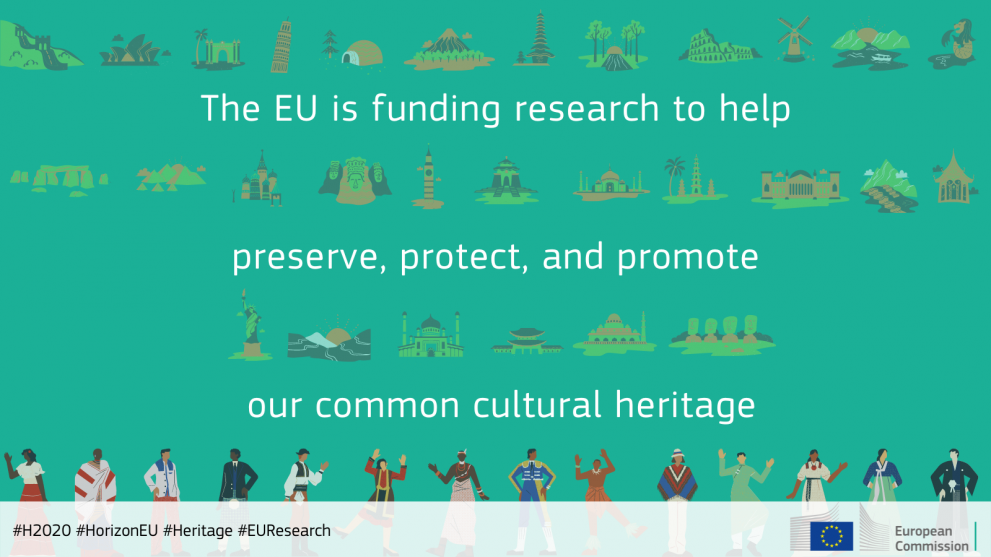
Background
According to UNESCO, cultural heritage is the ‘cultural legacy which we receive from the past, which we live in the present and which we will pass on to future generations’. Building on our shared European cultural space and adapting it for the future is a key concept of the New European Bauhaus; a European Commission-led initiative that strives to unite science and creativity as well as sustainability and aesthetics in imagining a better and brighter future. The New European Bauhaus festival will take place from the 9th to the 12th of June. Sign-up as a participant or as a visitor.
Young people will play a key role in shaping the current and future cultural scene. The New European Bauhaus Rising Stars prize both recognises and encourages youth-led participation in the ideals of the New European Bauhaus. The European Commission has actually placed youth at the centre of its priorities—extending beyond those related to cultural preservation and promotion. This culminated with the designation of 2022 as the European Year of Youth. The Year will support young people, recognising the economic and social difficulties they face as well as sacrifices they have made—in particular in light of the Covid-19 pandemic.
The designation of 2022 as the European Year of Youth has inspired numerous actors in the cultural scene to engage with young people. These initiatives have created much-needed dialogue between youth and culture.
Check out some of the EU-funded research and innovation projects that are also striving to preserve, protect, and promote Europe’s, and the world’s, common—yet diverse—cultural heritage.
‘Europe’s history is woven in silk’
According to the Silknow project, Europe’s history is ‘woven in silk’. Therefore, this research project is seeking to improve our understanding and conservation of 15th to 19th century European silk heritage. To do this, the project is applying next-generation computing research to meet the needs of actors. This includes museums, actors in education, the tourism industry, the creative industry, and the media. The project also aims to produce digital modelling of weaving techniques—the Virtual Loom—using the latest technological techniques.
Find out more about Silknow. Watch their video online.
Ending the trafficking of antiquities
Unfortunately, the trafficking of antiquities is a major source of revenue for international terrorist organisations. This illicit trafficking also contributes to the destruction of our common global cultural heritage. The NETcher project was born out of a desire, and need, to counter the smuggling of cultural artefacts. The project focuses on six objectives: defining the current situation, setting up an international network to foster cooperation, training, managing the collaborative platform, defining an international framework of best practises, and raising awareness. The project hopes to put an end to the smuggling of precious antiquities.
Find out more about NETcher.
3D modelling of sites and monuments
The Inception project researches 3D modelling of cultural monuments and sites. 3D modelling is an innovative means to engage with cultural heritage and helps understand how our cultural heritage has evolved over time. The projects seeks to advance state-of-the-art technologies in 3D reconstructions to enrich our knowledge on European heritage. To do so, it will develop cost-effective and efficient technologies. The project will also build inclusive networks not only to assist with making sure the technologies developed are as up-to-date as possible but also to ensure that the outputs will reach a wide audience.
Find out more about Inception. Watch this Euronews investigation into the project.
Links and further information
“Cultural heritage” may remain an elusive term; it is both the intrinsic and invisible culture around us as well as the behind the scenes preservation that goes unnoticed. However, the great lengths Ukrainians have gone to protect their heritage is testament to its importance. Search for #ARTvsWAR on social media to get involved with the European External Action Service’s campaign that highlights the painful destruction and attempts at restoration in Ukraine following the Russian invasion.
Read about more EU-funded projects that are researching in the field of cultural heritage on social media.
Follow the European Research Executive Agency and subscribe to our Cluster 2: Creativity, Culture and Inclusive Society newsletter to stay up-to-date with the latest news on these projects.
Read about Europa Nostra and partner's Youth for the Future of Cultural Heritage consultation and the European Heritage Youth Ambassadors Programme.
Details
- Publication date
- 3 May 2022
- Author
- European Research Executive Agency
